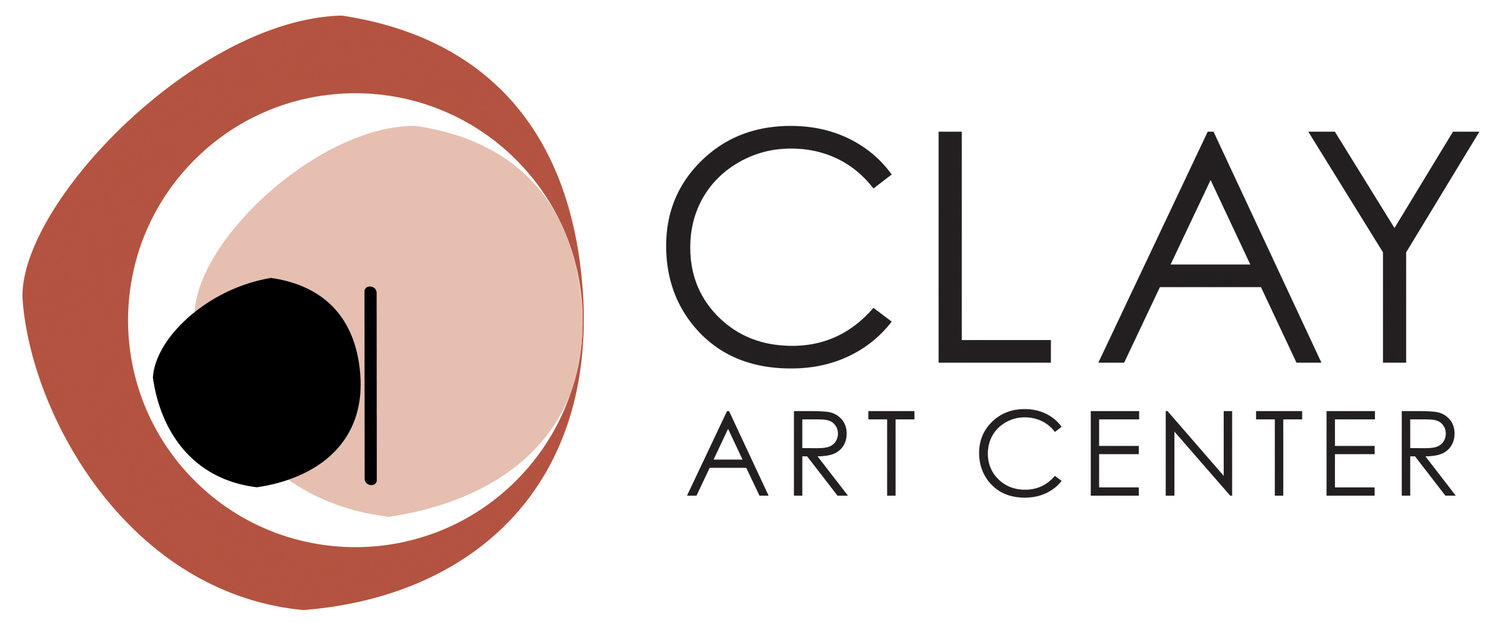Meet Artist-in-Residence Carley Holzem
Rittenberg Artist-in-Residence Carley Holzem sat down with us to discuss process, queer identity and art, and her exhibition, The Sunroom.
Resident Artist Carley Holzem graduated with a BFA in ceramics from the University of Wisconsin Stout and came to Clay Art Center after her year-long Fogelberg residency at Northern Clay. Her current exhibition, The Sunroom, is the culmination of her year’s work here at Clay Art Center, and in many ways embodies her artistic journey so far. Carley’s work is exclusively porcelain, and for the most part is wheel-thrown and altered to create her signature faceted, functional ceramics.
Carley shared that she first experimented with the pastel color palette that is now a hallmark of her work in college. While she has always loved vibrant color, Carley found that she could use her palette to tell deeper stories: "My thesis in college consisted of breakfast, lunch, and dinner sets displayed on wooden tables that my uncle made. My color palette just sort of went with it - breakfast being pink like a sunrise in the morning, lunch was a bright yellow like the sun, and dinner was a light blue celadon for the night time. Through that project, I figured out my palette and what I liked. It snowballed from there, affecting my drawing and making. I was drawn to having symbolism attached to the colors, and having the pieces tell a narrative. What does one cup and a pitcher say? Two cups? Add two plates?" In The Sunroom, this palette has been broadened to include peachy oranges, dusky greens, and moody purples.
The narratives are also even more sharply defined in Carley’s ceramic paintings, which depict scenes from everyday life, particularly everyday queer life and love. Carley shares that the familiarity and comfort of those scenes is an essential theme of the work: "With my drawing, I've always been drawn to women and non-binary people, their bodies, their postures. It's important to me to show them comfortable in daily life. People don't often think about how scary it can be to live a queer life. I wanted to show the normality of queer love. People should be safe in their homes, all people. It's slowly growing more scary, getting worse and worse as time goes on, especially in this political climate. That's why I think queer people need to raise their voices, be even more loud and proud, and I want to be a part of that."
“My queer identity naturally folded itself into my art practice and work. I've always been attracted to color, and that's part of queer life. I've always leaned towards the eccentric, and having too much going on. More is better: texture, color. Being queer, I didn't always know that my art was a part of my queer identity, because that's just how I've always made art. As I've discovered my queer identity, I've seen how my work fits into it, and it's like discovering myself through my work.”
Carley’s method of finding answers organically through making is also fundamental to her art. Almost none of Carley’s work is planned in advance, and most of her ideas come from the process of making. "I'm definitely a process-oriented artist,” Carley stated, “My process distracts me and takes me out of life. When I'm wheel-throwing, I'm only focused on throwing. And it's very sensory - I've realized that I need full-body immersion when I create. In the same way, I would like my work to transport people into a fantasy world." The process-oriented approach to art also removes the emphasis from the final product, allowing the artist to relax and creativity to flow. In fact, this is the crucial piece of advice that Carley said she would give to anyone starting out in ceramics, to love the process and not be worried about what you make.
“For me, it was never really about what I was making, it was about the making. It takes the pressure off. Things will break, you will get over it. It teaches you how to fail. Death and rebirth are very ceramic things.”
Over the past year of her residency, Carley has used this guiding principle to help many students at Clay Art Center find center and gain confidence at the wheel. Carley shared that she was building her own confidence alongside them: "I've learned that I have the ability and skill to teach, and I didn't think I had it before. A lot of my teachers pushed teaching a lot in college, like, 'You're going to have to teach!' And there was the imposter syndrome. But you realize you can do it, you do have a degree in this. And teaching made me a better thrower. It gave me more confidence. It allowed me to be like, maybe I am good at this. And moving across the country, I couldn't not be confident in myself and my decision. That was a good thing, I like a good challenge."
You can view Carley’s exhibition, The Sunroom, in the Gallery and online now through August 2nd.








